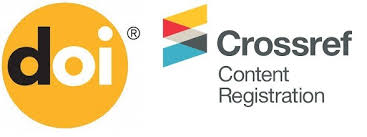Extension Of Technology Acceptance Model (ETAM): Adoption Of Cryptocurrency Online Trading Technology
DOI:
https://doi.org/10.24912/je.v24i2.591Abstract
The main idea of the study was to determine the influence of the antecedents (trialability and complexity) on the existing constructs of Technology Acceptance Model (TAM) and to test measurement invariance on the relationship between the latent constructs used in this extended version of Technology Acceptance Model (ETAM). A survey questionnaire was administered on Cyptocurrency mobile applicantions users and a total of 41 responses were collected. The research model was assessed using SEM-PLS approach. The structural model was then tested in order to establish validity & reliabelity. The invariance test was first performed on the measurement model and then on the structural model using SmartPLS 3.0. The predictor variables in ETAM were able to explain 44,9% of the variance in actual usage of Cryptocurrency mobile applications.
References
Beins, B. C. (2017). Research method: A tool for life. Cambridge University Press.
Bijith Marakarkandy, Nilay Yajnik and Chandan Dasgupta. (2017). "Enabling Internet Banking Adoption", Journal of Enterprise Information Management, Vol. 30 No. 2, pp. 263-294.
Choe, M., and Noh, G. (2018). Combined Model Of Technology Acceptance And Innovation Diffusion Theory For Adoption Of Smartwatch. Intenational Journal of Contents. 14(3), pp 32-38.
Chuang, L. M., Liu, C. C., and Kao, H. (2016). The Adoption of Fintech Service: TAM Perspective. International Journal of Management and Administrative Sciences (IJMAS). 3(7). pp 1-15.
Coin-dance. (2018). Trading Value Cryptocurrencies Market. (https://coin.dance/volume/localbitcoins, diakses 15 Mei 2018)
Creswell, J. W., and Creswell, J. D. (2017). Research design: Qualitative, Quantitative, And Mixed Methods Approaches. Sage Publications.
Etsebeth, E. (2012). Trialability, Perceived Risk And Complexity Of Understanding As Determinants Of Cloud Computing Services Adoption. Degree Of Master Of Business Administration. University Of Pretoria.
Ferdinand, Augusty. (2014). Metode Penelitian Manajemen. Semarang: Badan Penerbit Universitas Diponegoro.
Ghozali, I., and Latan, H. (2015). Partial Least Squares: Konsep, Teknik dan Aplikasi menggunakan Program SmartPLS 3.0 (Edisi 2). Semarang: Universitas Diponogoro.
Ghozali, Imam. (2016). Aplikasi-Analisis Multivariate Dengan Program IBM SPSS 23. Semarang: BadanPenerbitUniversitasDiponegoro.
Hileman, G., and Rauchs, M. (2017). Global Cryptocurrency Benchmarking Study. Cambridge Centre for Alternative Finance. Cambridge. United Kingdom.
Leon, M. V. (2018). Factors Influencing Behavioral Intention to Use Mobile Banking. International Journal of Business and Social Science. 9(9). pp 13-24.
Liu, Y., Pu, B., Guan, Z., and Yang, Q. (2016). Online Costumer Experience And Its Relationship To Purchase Intention: An Empirical Case Of Online Travel Agencies In China. Asia Pasific Journal of Tourism Research, 21(10), pp 1085-1099.
Park, T. Y., and Kim, E. (2013). A Resource-Based Perspective On Human Capital Losses, HRM Investments, And Organizational Performance. Strategic Management Journal. 34. pp 572–589.
Sugiyono. (2016). Metodologi Penelitian Kuantitatif, Kualitatif, dan R&D. Bandung: CV Alfabeta.
Syahadiyanti, L and Subriadi, A,P. (2018). "Diffusion of Innovation Theory Utilization Online Financial Transaction: Literature Review," International Journal of Economics and Financial Issues, Econ journals, vol. 8(3), pages 219-226.
Tracy, Kim W. (2012). Mobile Application Development Experiences on Apple’s iOS and Android OS. Potentials, IEEE 31, No. 4. pp 30-34.
Downloads
Published
How to Cite
Issue
Section
License
Copyright (c) 2019 Jurnal Ekonomi

This work is licensed under a Creative Commons Attribution-NonCommercial-ShareAlike 4.0 International License.
This journal provides immediate open access to its content on the principle that making research freely available to the public supports a greater global exchange of knowledge.

This work is licensed under a Creative Commons Attribution-NonCommercial-ShareAlike 4.0 International License.
Similar Articles
- Lerbin R. Aritonang R, Stefani, Intensi Membeli, Jenis Kelamin, Gender Produk, Dan Tujuan Konsumsi , Jurnal Ekonomi: Vol. 24 No. 3 (2019): November 2019
You may also start an advanced similarity search for this article.


















